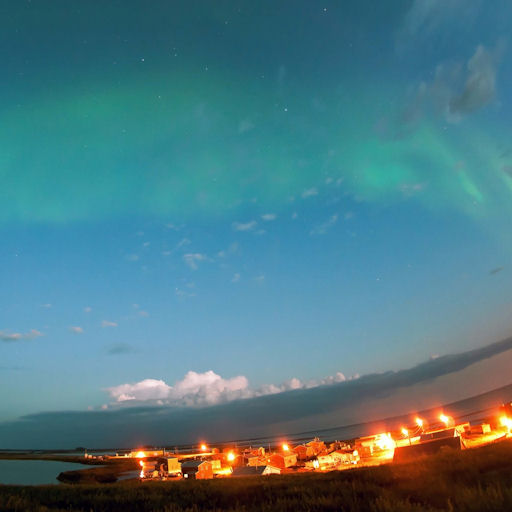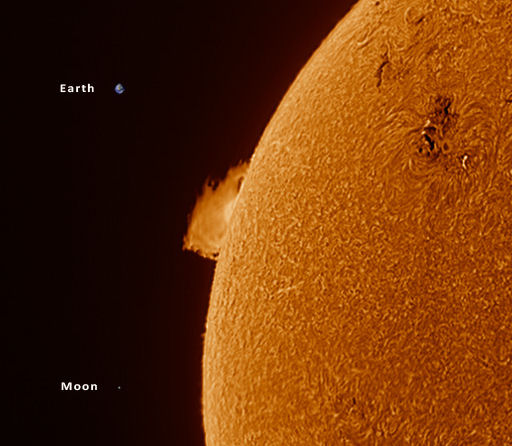Metallic photos of the sun by renowned photographer Greg Piepol bring together the best of art and science. Buy one or a whole set. They make a stellar gift. | | |
QUIET SUN: Another day, another .... moment of silence? For the 5th day in a row, solar activity is low. None of the sunspots on the Earthside of the sun is actively flaring, and the sun's X-ray output has nearly flatlined.
SUMMER AURORAS: "Aurora season is back here in the Northwest Territories of Canada," reports Francis Anderson of Tuktoyaktuk NWT. "Although it does not get completely dark yet, the northern lights are once again visible. This first photo of the aurora was taken on August 25th from atop a pingo with a fairly large cumulonimbus cloud towards the southern horizon, which was flashing lightning every five or so minutes." (continued below)

"One of the warmest days I have ever shot the aurora, it was +16C at the time and +23C earlier that day," continues Anderson. "I'm looking forward to clear skies in the months ahead for an even better view of the Northern Lights."
He might not have to wait months. A medium-speed solar wind stream is buffeting Earth's magnetic field now, and this could stir up more Arctic lights tonight. NOAA forecasters estimate a 15% chance of geomagnetic activity. Aurora alerts: text, phone.
Realtime Aurora Photo Gallery
THE SCALE OF THINGS: For the past few days, amateur astronomers have been monitoring a big cloud of plasma hovering above the sun's eastern horizon. How big is it? Göran Strand of Frösön, Sweden, superposed the Earth and moon on a picture he took yesterday to show the scale of things:

"It was an amazing view through my binoviewer," says Strand. "I placed the Earth and moon at their correct separation: 384,400 km apart. This is one big prominence."
The cloud is held aloft by solar magnetic fields. If those fields become unstable then the cloud could collapse, hitting the stellar surface and producing a Hyder flare. Amateur astronomers with backyard solar telescopes are encouraged to monitor developments.
Realtime Space Weather Photo Gallery
Realtime Noctilucent Cloud Photo Gallery
[previous years: 2003, 2004, 2005, 2006, 2007, 2008, 2009, 2011]
Potentially Hazardous Asteroids (
PHAs) are space rocks larger than approximately 100m that can come closer to Earth than 0.05 AU. None of the known PHAs is on a collision course with our planet, although astronomers are finding
new ones all the time.
On August 29, 2012 there were potentially hazardous asteroids.
Notes: LD means "Lunar Distance." 1 LD = 384,401 km, the distance between Earth and the Moon. 1 LD also equals 0.00256 AU. MAG is the visual magnitude of the asteroid on the date of closest approach. | | The official U.S. government space weather bureau |
| | The first place to look for information about sundogs, pillars, rainbows and related phenomena. |
| | Researchers call it a "Hubble for the sun." SDO is the most advanced solar observatory ever. |
| | 3D views of the sun from NASA's Solar and Terrestrial Relations Observatory |
| | Realtime and archival images of the Sun from SOHO. |
| | from the NOAA Space Environment Center |
| | the underlying science of space weather |

